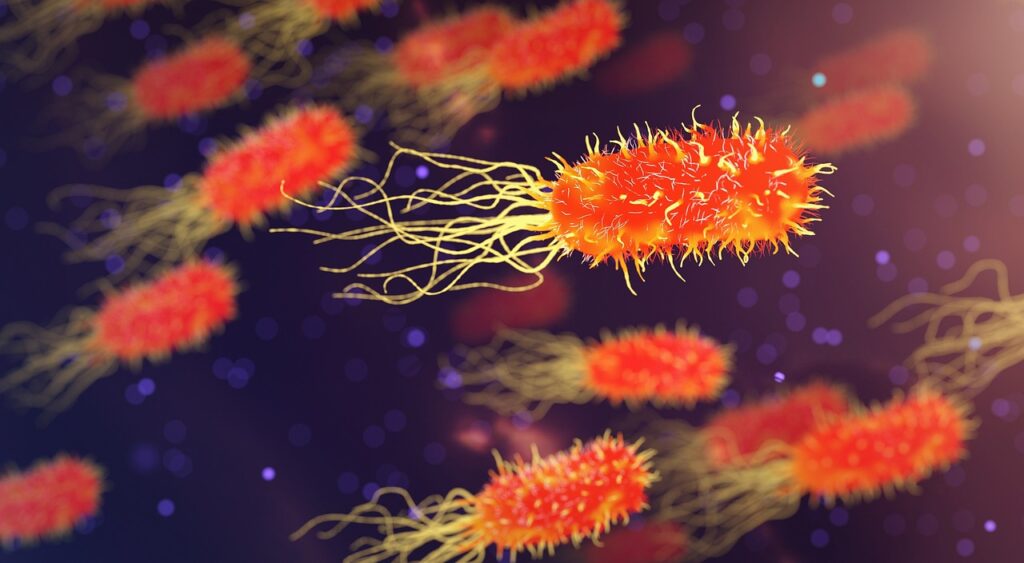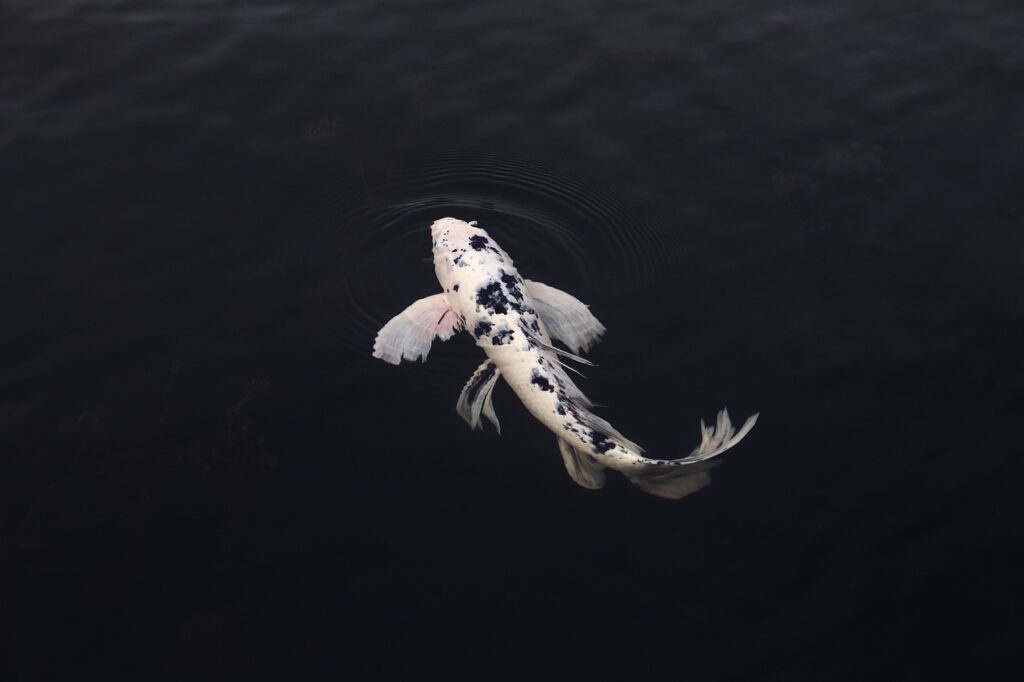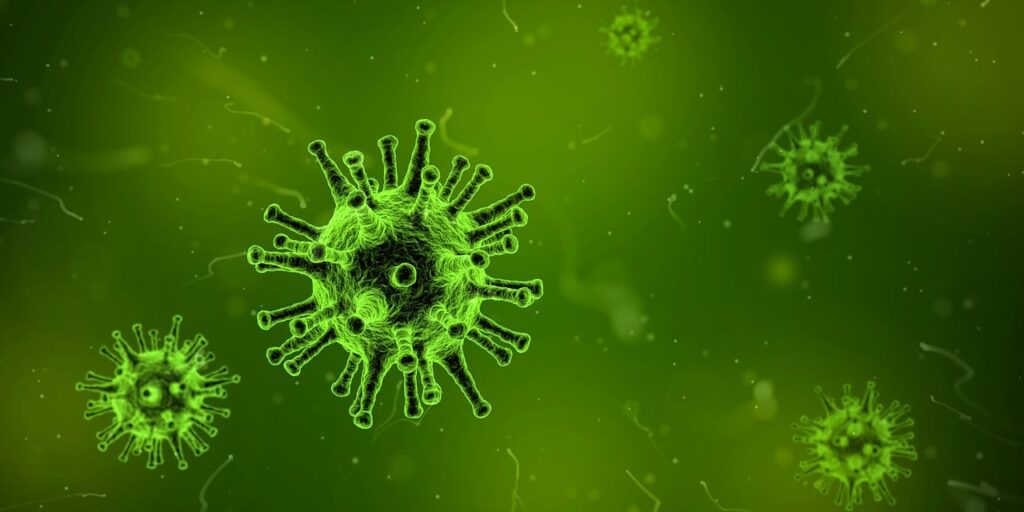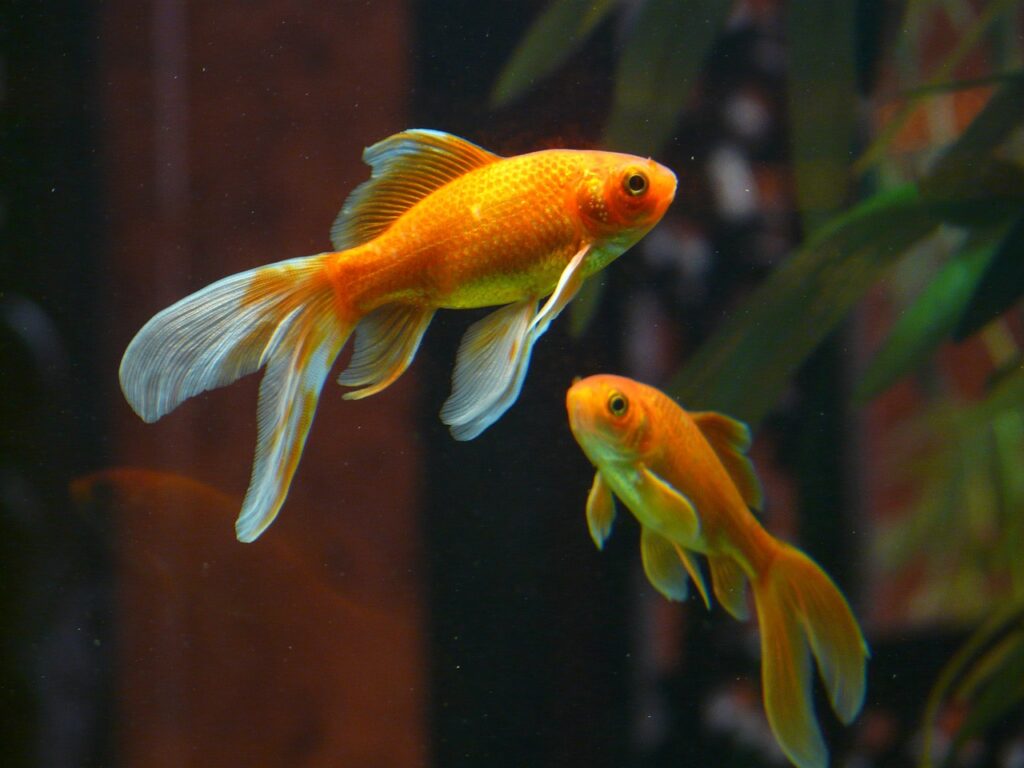Have you ever wondered about the health of the fish in your pond? Whether you’re a dedicated pond owner or simply a curious observer, it’s important to know the 10 most common fish diseases in a pond, those that can affect these beautiful creatures.
From fungal infections to parasitic diseases, this article will provide you with a comprehensive overview of the most prevalent fish diseases found in ponds. By understanding these ailments, you’ll be better equipped to identify and address any potential health concerns, ensuring the wellbeing of your beloved aquatic friends.

Introduction
Having a pond can be a wonderful addition to your backyard or garden. It provides a peaceful and serene environment, and allows you to observe and appreciate the beauty of nature. However, just like any other living organism, fish are susceptible to various diseases.
These diseases can be caused by bacteria, fungi, parasites, viruses, environmental factors, nutritional deficiencies, and even behavioral disorders. In this article, we will explore the most common fish diseases that can occur in a pond and what you can do to prevent and treat them.
1. Bacterial Infections
Bacterial infections are one of the most common fish diseases in a pond. These infections can be caused by various bacteria and can affect different parts of the fish’s body. Three common bacterial infections that fish in a pond may encounter are Columnaris Disease, Aeromonas Infection, and Edwardsiella Infection.
Columnaris Disease
Columnaris Disease, also known as cotton wool disease, is caused by a bacteria called Flavobacterium columnaris. This disease commonly affects the skin, fins, and gills of the fish. Infected fish may exhibit symptoms such as white or gray patches on their body, frayed fins, and difficulty in breathing. To prevent and treat Columnaris Disease, it’s essential to maintain good water quality, provide a balanced diet, and promptly isolate and treat infected fish with appropriate medications.
Aeromonas Infection
Aeromonas Infection is caused by bacteria from the Aeromonas genus. This infection can affect fish of all ages and can lead to skin ulcers, fin rot, pop-eye, and even systemic infections. Poor water quality, overcrowding, and stress can increase the chances of fish contracting this infection. Regular water changes, maintaining optimal water parameters, and providing a stress-free environment are crucial in preventing and managing Aeromonas Infection. Antibiotics may be prescribed by a veterinarian to treat severe cases.
Edwardsiella Infection
Edwardsiella Infection is caused by the bacteria Edwardsiella ictaluri. This infection primarily affects catfish and can cause a range of symptoms such as abdominal swelling, discolored patches on the skin, and lethargy. Stress, poor water quality, and overcrowding can contribute to the development of this infection. Maintaining clean water conditions, avoiding overfeeding, and ensuring proper nutrition are key in preventing and managing Edwardsiella Infection. Antibiotics may be necessary in severe cases.

2. Fungal Infections
Fungal infections can also occur in fish living in a pond. These infections are often caused by fungi from the Saprolegnia and Ichthyophonus species. Fish with weakened immune systems or injuries are more susceptible to these infections. Let’s explore two common fungal infections in pond fish: Saprolegnia Infection and Ichthyophonus Infection.
Saprolegnia Infection
Saprolegnia Infection, also known as water mold, is caused by fungi from the Saprolegnia species. This infection commonly affects fish with open wounds or external injuries. Infected fish may develop fuzzy white or gray patches on their skin, fins, or gills. maintaining good water quality, reducing stress, and preventing injuries can help minimize the risk of Saprolegnia Infection. Antifungal treatments and wound care can help treat and control the infection.
Ichthyophonus Infection
Ichthyophonus Infection is caused by the fungus Ichthyophonus hoferi. This infection can affect various fish species and can cause symptoms such as weight loss, lethargy, and external sores. It is commonly transmitted through cannibalism or ingestion of infected prey. Preventing this infection involves providing a balanced diet, avoiding fish cannibalism, and ensuring clean water conditions. Currently, there is no known cure for Ichthyophonus Infection, and affected fish should be euthanized to prevent the spread of the fungus.
Branchiomycosis
Branchiomycosis is caused by the fungal organism Branchiomyces demigrans. This infection primarily affects gill tissues, causing respiratory problems in fish. Infected fish may exhibit symptoms such as excessive mucus production, labored breathing, and decreased feeding activity. Maintaining good water quality, avoiding overcrowding, and providing proper nutrition can help prevent this infection. Antifungal medications may be prescribed by a veterinarian to treat Branchiomycosis.
3. Parasitic Infections
Parasitic infections are a common concern for pond fish and can be caused by various parasites. These infections can affect the skin, gills, and internal organs of fish. Let’s take a closer look at three common parasitic infections: Ichthyophthirius multifiliis (Ich or White Spot Disease), Gyrodactylus and Dactylogyrus Infections, and Trichodina Infection.
Ichthyophthirius multifiliis (Ich or White Spot Disease)
Ichthyophthirius multifiliis, commonly known as Ich or White Spot Disease, is caused by a parasite that attacks the skin and gills of fish. Infected fish develop small white spots on their body, fins, and gills, which can cause irritation and respiratory distress. To prevent and treat Ich, maintaining good water quality, minimizing stress, and implementing proper quarantine procedures for new fish are crucial. Medications and increased water temperature can help eradicate the parasite.
Gyrodactylus and Dactylogyrus Infections
Gyrodactylus and Dactylogyrus are two common parasite genera that can cause infections in pond fish. These parasites primarily affect the skin, fins, and gills of fish. Infected fish may exhibit symptoms such as excessive mucus production, erratic swimming behavior, and fin deterioration. Maintaining optimal water quality, practicing good hygiene, and implementing regular parasite prevention measures can help reduce the risk of these infections. Medications specifically targeting the parasites may be used to treat severe infestations.
Trichodina Infection
Trichodina is a parasitic genus that can cause infections in pond fish. These parasites primarily affect the skin and gills, causing irritation and respiratory problems in fish. Infected fish may display symptoms such as flashing, increased mucus production, and clamped fins. To prevent Trichodina Infection, maintaining proper water quality, implementing filtration systems, and regularly inspecting and treating new fish are essential. Medications that target the parasites may be used to treat severe infections.

4. Viral Infections
Viral infections can have devastating effects on fish populations in a pond. These infections can spread rapidly and result in high mortality rates. Let’s explore three common viral infections in pond fish: Spring Viremia of Carp (SVC), Koi Herpesvirus (KHV), and Viral Hemorrhagic Septicemia (VHS).
Spring Viremia of Carp (SVC)
Spring Viremia of Carp (SVC) is a viral disease that primarily affects carp species. Infected fish may exhibit symptoms such as loss of appetite, swollen eyes, hemorrhaging, and skin lesions. SVC can have significant economic impacts on aquaculture farms. Implementing strict biosecurity measures, avoiding introduction of infected fish, and practicing good hygiene can help prevent the spread of SVC. Currently, there is no cure for this viral infection.
Koi Herpesvirus (KHV)
Koi Herpesvirus (KHV) is a highly contagious viral disease that affects koi and common carp. Infected fish may display symptoms such as lethargy, loss of appetite, and gill necrosis. KHV can cause substantial mortality in affected fish populations. Preventing the introduction of infected fish, implementing quarantine procedures for new additions, and practicing good pond hygiene are crucial in preventing the spread of KHV. There is currently no known cure for this viral infection.
Viral Hemorrhagic Septicemia (VHS)
Viral Hemorrhagic Septicemia (VHS) is a viral disease that affects various fish species. Infected fish may exhibit symptoms such as bleeding, swollen abdomen, and hemorrhages on the skin and fins. VHS can have severe impacts on wild fish populations. Implementing strict biosecurity measures, avoiding introduction of infected fish, and practicing good pond hygiene are essential in preventing the spread of VHS. Currently, there is no cure for this viral infection.

5. Protozoan Infections
The Protozoan infections are caused by various microscopic organisms and can affect the skin, gills, and internal organs of fish. Let’s explore three common protozoan infections: Costia Infection, Chilodonella Infection, and Trichodina Infection.
Costia Infection
The Costia Infection, also known as costiasis, is caused by the protozoan Costia spp. This infection can cause severe damage to the gills and skin of fish, leading to respiratory distress and skin lesions.
Fish with weakened immune systems or poor water quality are more susceptible to Costia Infection, implementing regular water changes, maintaining optimal water parameters, and reducing stress can help prevent this infection. Medicated baths or dips may be used to treat severe cases.
Chilodonella Infection
The Chilodonella Infection is caused by the protozoan Chilodonella spp. This infection primarily affects the skin and gills of fish. Infected fish may exhibit symptoms such as excessive mucus production, flashing, and lethargy. Poor water quality, overcrowding, and stress can increase the risk of Chilodonella Infection.
Maintaining optimal water conditions, implementing regular water changes, and practicing good hygiene can help prevent this infection. Medications that target the protozoan may be used to treat severe cases.
Trichodina Infection
The Trichodina Infection, caused by the protozoan Trichodina spp., can affect the skin and gills of fish. Infected fish may display symptoms such as flashing, excessive mucus production, and fin deterioration. Poor water quality, overcrowding, and stress can contribute to the development of this infection.
Maintaining optimal water conditions, implementing regular water changes, and inspecting and treating new fish are crucial in preventing Trichodina Infection. Medications targeting the protozoan may be used to treat severe infections.

6. Environmental Diseases
The Environmental diseases in pond fish are often caused by suboptimal water conditions or pollutants. These diseases can have detrimental effects on fish health. Let’s explore three common environmental diseases: Oxygen Depletion, Ammonia Toxicity, and Nitrite Toxicity.
Oxygen Depletion
The Oxygen Depletion occurs when the oxygen levels in the pond water drop to dangerous levels for fish. This can be caused by excessive organic matter, high water temperatures, or inadequate aeration.
The Fish affected by oxygen depletion may gasp at the water surface, display rapid breathing, and show signs of lethargy or stress. Ensuring proper pond aeration, regular water quality testing, and avoiding overstocking are essential in preventing oxygen depletion.
Additionally, removing excess organic matter and performing regular water changes can help maintain optimal oxygen levels.
Ammonia Toxicity
Ammonia Toxicity is a common environmental disease that occurs when ammonia levels in the pond water become elevated. Ammonia is produced through fish waste, decaying organic matter, and uneaten food. High levels of ammonia can be toxic to fish, leading to respiratory distress, fin damage, and even death.
Maintaining proper filtration systems, avoiding overfeeding, and regularly monitoring water parameters can help prevent ammonia toxicity. Performing regular water changes and implementing biological filtration can also aid in reducing ammonia levels.
Nitrite Toxicity
Nitrite Toxicity occurs when nitrite levels in the pond water become elevated. Nitrites are produced through the breakdown of ammonia by nitrifying bacteria. High levels of nitrite can be toxic to fish, causing symptoms such as lethargy, gill damage, and darkening of the blood.
Implementing proper filtration systems, regularly monitoring water parameters, and avoiding overstocking can help prevent nitrite toxicity. Performing regular water changes and establishing a stable nitrogen cycle in the pond can aid in reducing nitrite levels.
7. Nutritional Deficiency Diseases
Nutritional deficiencies can occur in pond fish when their diet lacks essential vitamins and nutrients. These deficiencies can compromise the immune system and overall health of the fish. Let’s explore three common nutritional deficiency diseases: Vitamin C Deficiency (Scurvy), Vitamin B1 Deficiency (Polyneuritis), and Vitamin D Deficiency (Rickets).
Vitamin C Deficiency (Scurvy)
Vitamin C Deficiency, also known as scurvy, can occur in fish when their diet lacks an adequate amount of vitamin C. This deficiency can weaken the immune system and result in poor wound healing, lethargy, and swollen or degenerated fins. To prevent vitamin C deficiency, it’s essential to provide a balanced diet that includes vitamin C-rich foods such as fresh fruits and vegetables. Commercial fish foods that are formulated with sufficient vitamin C content are also available.
Vitamin B1 Deficiency (Polyneuritis)
Vitamin B1 Deficiency, also known as polyneuritis or head-standing disease, can occur when fish do not receive enough vitamin B1 in their diet. This deficiency can result in neurological symptoms such as abnormal swimming, head-standing, and loss of balance. Providing a varied diet that includes foods rich in vitamin B1, such as fish eggs, liver, and shrimp, can help prevent this deficiency. Commercial fish foods that are fortified with vitamin B1 may also be used.
Vitamin D Deficiency (Rickets)
Vitamin D Deficiency, also known as rickets, can occur in fish when their diet lacks sufficient vitamin D. This deficiency can lead to skeletal deformities, poor growth, and weakened bones. To prevent vitamin D deficiency, it’s crucial to provide a diet that includes foods rich in vitamin D, such as fish liver and certain fish species. Additionally, exposing pond fish to natural sunlight or using UV light sources can help stimulate the production of vitamin D in their bodies.

8. Behavioral Disorders
Most behavioral disorders can occur in pond fish due to various factors, including stress, aggression, and environmental conditions. These disorders can affect the overall well-being and social dynamics of the fish. Let’s explore three common behavioral disorders: Aggressive Behavior, Lethargy, and Jumping Out of Water.
Aggressive Behavior
Aggressive behavior can occur in pond fish, especially during breeding or territorial disputes. Aggression can lead to physical injuries, stress, and even the death of weaker or smaller fish. Providing adequate hiding spots and sufficient space can help minimize aggression among fish. Additionally, paying attention to the gender ratios and compatibility of fish species in the pond can also reduce aggressive behavior.
Lethargy
Lethargy, or a lack of activity, can be a sign of underlying health issues, poor water quality, or inadequate nutrition. Fish that are inactive and spend excessive time near the water surface or bottom may be experiencing lethargy. Regular water quality testing, ensuring proper nutrition, and monitoring fish behavior can help identify and address the causes of lethargy. Adjusting the feeding regimen and addressing any health concerns can help improve fish activity levels.
Jumping Out of Water
Fish jumping out of water can be a cause for concern in a pond. This behavior can be a sign of various issues, including predator presence, poor water quality, territorial disputes, or stress.
To prevent fish from jumping out of the water, it’s crucial to address the underlying causes. Installing physical barriers, such as netting, can help deter predators and prevent fish from escaping. Ensuring optimal water quality, minimizing stress, and addressing any territorial disputes can also reduce the likelihood of this behavior.
10. Miscellaneous Diseases
In addition to the previously mentioned diseases, there are various other miscellaneous diseases that can affect pond fish. These diseases can have diverse causes and symptoms. Let’s explore three common miscellaneous diseases: Swim Bladder Disorder, Dropsy, and Fish Ulcers.
Swim Bladder Disorder
Swim Bladder Disorder is a condition that affects the fish’s swim bladder, causing buoyancy problems. Infected fish may have difficulty maintaining their position in the water and may float to the surface or sink to the bottom. The Swim Bladder Disorder can be caused by various factors, such as internal infections, genetics, or overfeeding. Adjusting the fish’s diet, ensuring proper nutrition, and preventing overfeeding can help manage and prevent Swim Bladder Disorder.
Dropsy
Dropsy, also known as edema, is a condition characterized by fluid accumulation in the fish’s body, resulting in bloating and swelling. Infected fish may exhibit symptoms such as protruding scales, raised scales, and a “pinecone” appearance.
Dropsy can be caused by various factors, including bacterial or parasitic infections, poor water quality, or organ failure. Treating Dropsy involves addressing the underlying cause, such as infections or water quality issues, and providing supportive care. Unfortunately, dropsy is often a sign of advanced disease, and the prognosis may be poor.
Fish Ulcers
Fish Ulcers are open sores or wounds that develop on the skin of pond fish. These ulcers can be caused by various factors, including bacterial or fungal infections, physical injuries, or poor water conditions. Infected fish may display symptoms such as open sores, redness, and inflammation.
Treating fish ulcers involves maintaining optimal water quality, providing proper wound care and medication, and addressing any underlying infections. Preventing injuries and maintaining good hygiene in the pond can help minimize the risk of fish ulcers.
The 10 Most Common Fish Diseases In A Pond
In conclusion, it’s crucial to be aware of the most common fish diseases that can occur in a pond. By understanding the causes, symptoms, and prevention methods for these diseases, you can take proactive measures to ensure the health and well-being of your pond fish.
Regular monitoring of water quality, implementing proper nutrition, practicing good pond hygiene, and promptly addressing any signs of disease can help prevent and manage fish diseases effectively. Remember, a healthy pond leads to happy and thriving fish!
